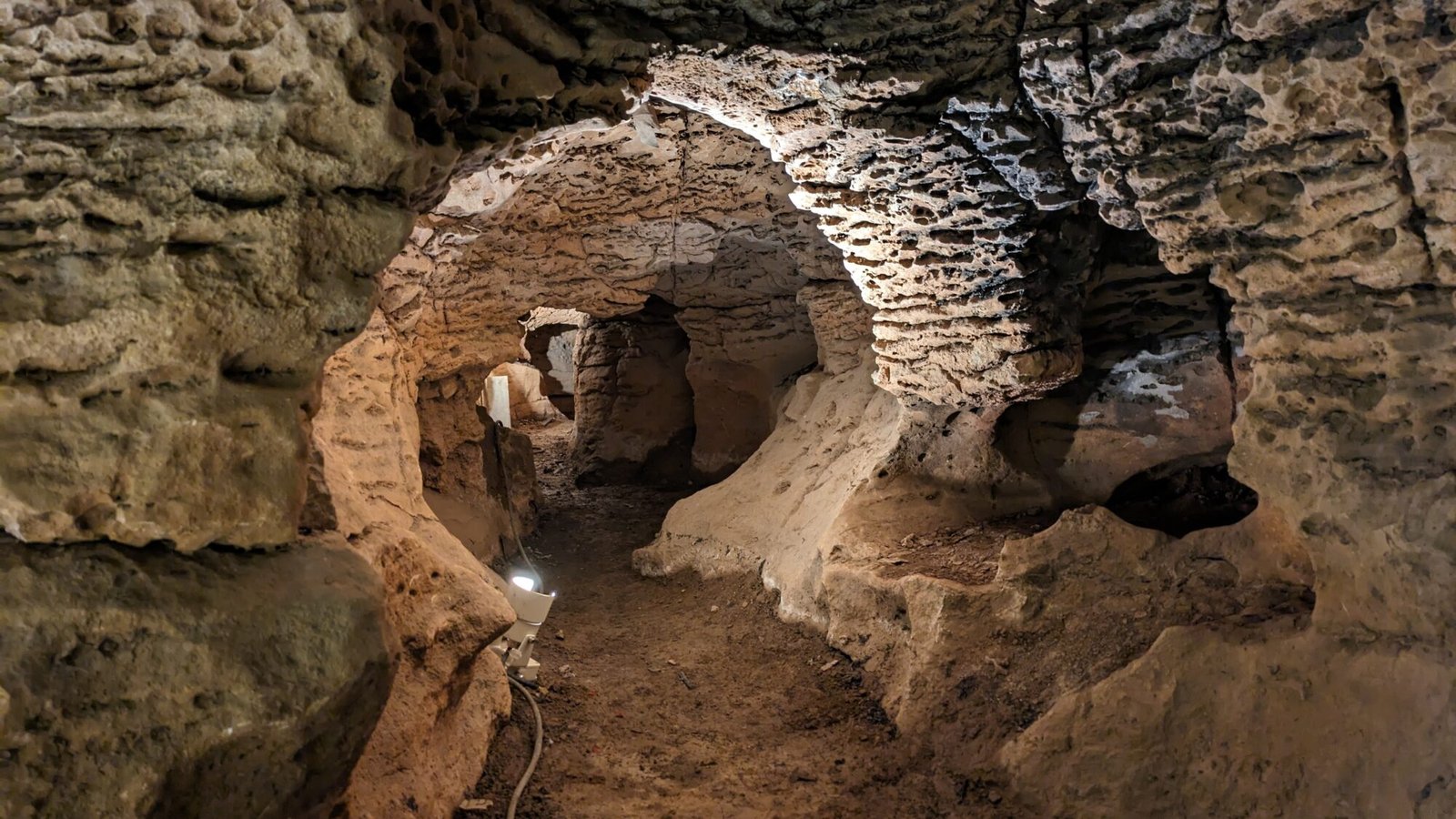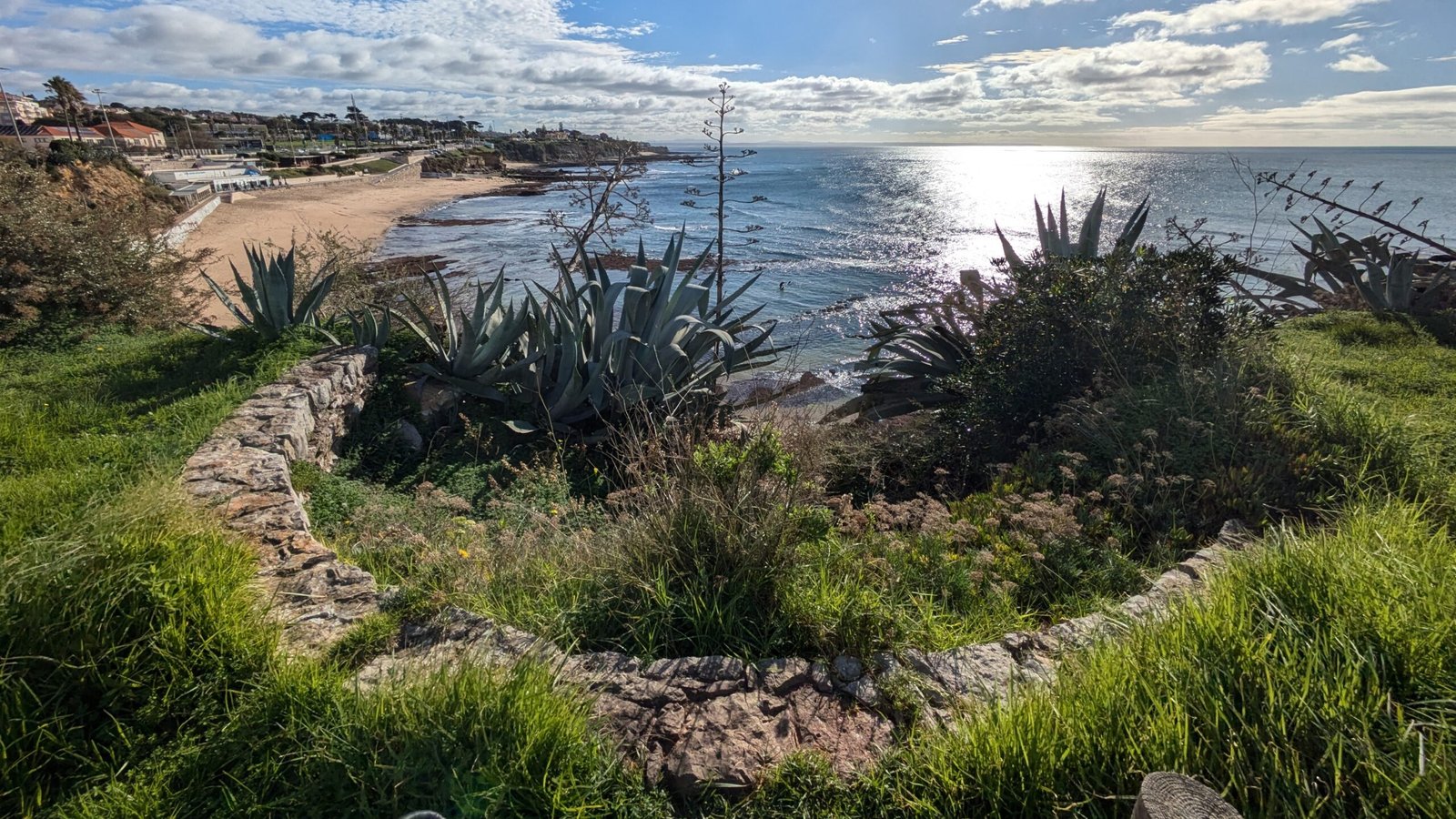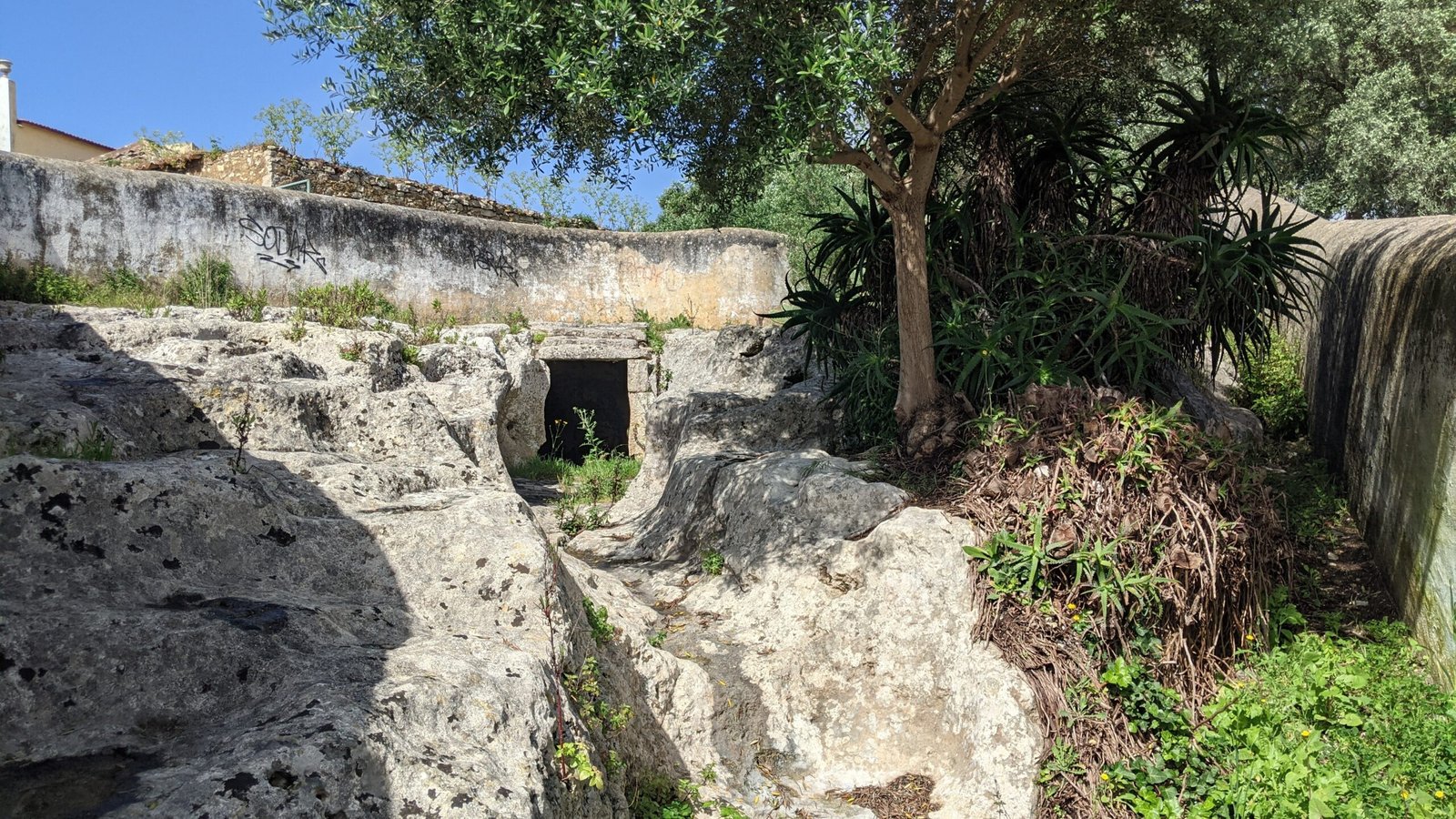There are a number of interesting caves with prehistoric significance. Some are natural caves (in Portuguese, grutas) that contain evidence that humans used them for shelter and/or for entombment. Others are man-made, carved into the stone intentionally to create a space (usually) for internment. (In Portuguese: gruta artificial or plural grutas artificiais) A man-made cave that was used as a temple or tomb is specifically called (from Greek) in English a hypogeum (plural hypogea). (In Portuguese, hipogeu or plural hipogeus)
Note that these sites lack evidence of human habitation. Any artefacts found will be displayed in museums.
Use the map at the right to search for specific sites (highlighted map markers indicate caves that are described on this website), or browse through the entries below. More posts are added as sites are visited!
-
Artificial Caves of São Pedro do Estoril
Stand on the cliff face and look off to sea, enjoying the fresh breeze. The surf below competes with the noise of the traffic along the Avenida Marginal. Look down: there surrounded by a circular wall and covered by vegetation are the vestiges of caves that were carved into the rock over 4,000 years ago.…
-
Artificial Caves of Alapraia
Portuguese name: Grutas de Alapraia or Grutas Artificiais de Alapraia. Also known as: Necrópole Eneolítica de Alapraia Walk around the neighbourhood of Alapraia, and look into the yards of the houses, read the menu from the restaurant, look at the notices of the clinic. Little glimpses of life in this suburban area surround you. Then…
-
Praia das Maçãs Prehistoric Monument
Portuguese: Monumento pré-histórico da Praia das Maçãs Also known as: Tholos do Outeiro das Mós, or Tholos da Praia das Maçãs In the Neolithic era, about 4,000BC, an artificial cave was dug on this site. It had a corridor and central burial chamber with side niches. Later, a large tholos was built. The site was…



